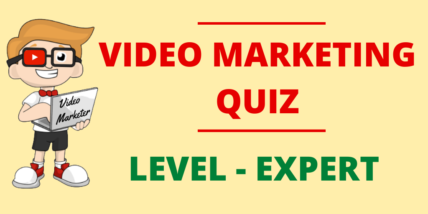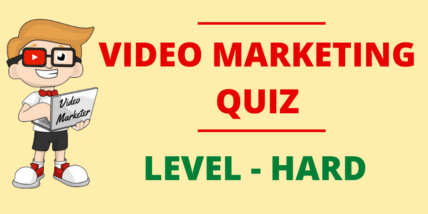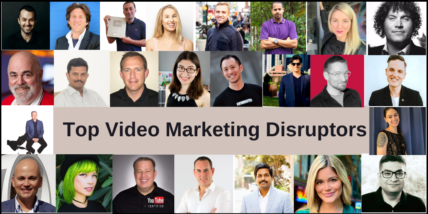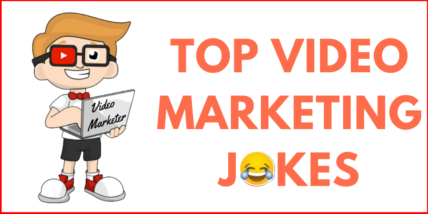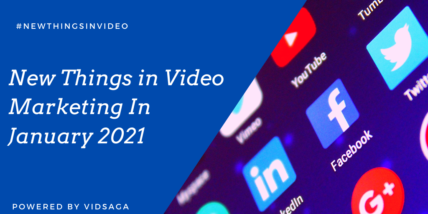Learn how to adapt to the voice of a brand from copywriting expert Ashish Ghongade
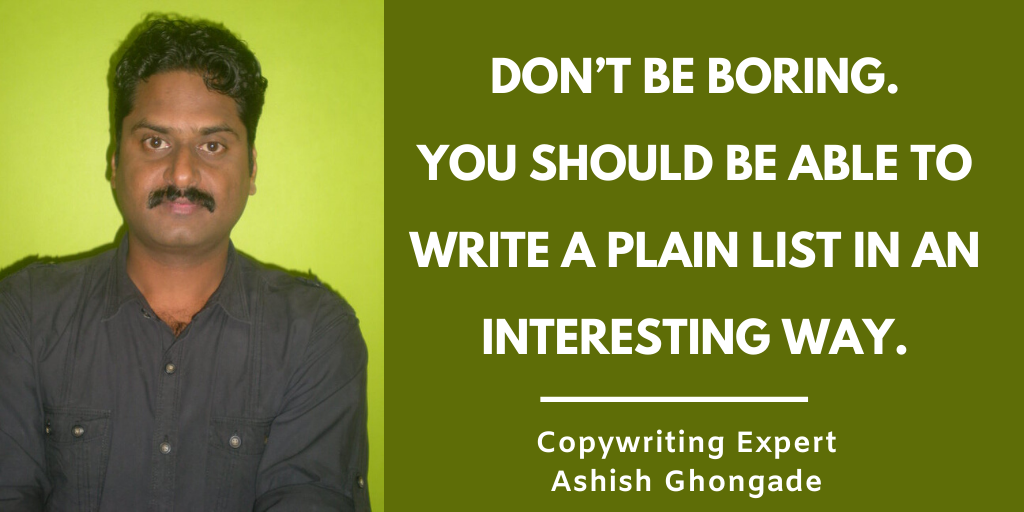
Ashish is a Freelance Copywriter with over 15 years of experience. He is exposed to national and international brands and has worked in ATL, BTL & Digital Media.
He has written copy and content for a wind range of clients and he is well-versed in Real Estate, Automobile, Banking & Finance, Telecom, Information Technology, Confectionary, PSUs and Govt. Departments.
In this article he has shared some deep insights on various copywriting aspects. Read on!
1. Tell our community members about your life journey so far, Ashish.
I completed my schooling till 10th in a village. And then for further studies, I went to Aurangabad, a small town in Maharashtra. I was good at academics. Back then good students opted for science stream and pursued a career in engineering or medicine.
I opted for engineering after 12th Standard. While studying Bachelor of Engineering (B.E.) in Production, I could sense that engineering was not for me but didn’t know what else to do. Still, I passed B.E. with first class in 1999. Then I worked in the engineering industry for about 5 years. But how I came to be a writer?
While working in the engineering field, I observed that in newspapers I would read Ads first and then the news. I was an avid reader, had not written anything till then but writing fascinated me.
Once I spotted an Ad in The Times of India, by Cannes Lions Advertising Festival (The Oscars of Advertising) organizers inviting young advertising professionals to participate in a competition.
The first award was sponsorship of the festival for the creative team. The topic I chose was to encourage people to help underprivileged children to go to school. I thought ‘Why not give it a shot’. I had hit on an idea. But how to execute it, was the question.
I wanted a pic of a school going child. To get it, I visited many clothes stores in Aurangabad. And I finally got a brochure of S’Kumars (students’ readymade uniform makers) with the picture in it.
I went to a friend’s friend who had a computer and got it executed (It was way back in 2004 when computers were rare, more so in a town like Aurangabad. And images were not easily available).
I put two pictures in the Ad. One of the school-going children and a box ticked under it. And another picture of a poor child wearing a torn frock and a crossed box under it. It was accompanied by a one-line copy. The line (after 16 years, I still remember) was “What are we going to answer to our future generations?” It was the first line I wrote in advertising.
But there was a snag. To participate in the competition, there was a prerequisite. It was necessary to have been working with an INS accredited agency. There was only one in Aurangabad. I went to its Branch Manager and asked whether I could get a certificate that I was working with them.
She refused but asked me to come for an interview of a Copywriter the next day. I didn’t know what a Copywriter was. But since the word included ‘writer’, I guessed it must be related to writing. I went for the interview, took a copy test (it was based on a paint brand) and got selected.
That’s how I got my first job as a Copywriter and I accepted it even though it paid me half of what I was getting in the engineering field.
Further, from Aurangabad, I hopped to Pune and then Mumbai for work. There I got opportunities to work on national and international brands, and with clients from a wide range of industries.
Thus I have experienced life in a village (Deogaon), a small town (Aurangabad), a mini-metro (Pune) and a metro (Mumbai). And these experiences have helped me immensely in my writing.
In 2010, I decided to venture on my own and started Freelance Writing in Aurangabad. And my life came full circle.
Invitation to join Global Marketers Community Discussion Space
2. Can you tell us about a creative campaign you wrote starting from conception to execution?
When I was working in Pune with an Ad agency, we had Brugge La Chocolaterie, a Premium Belgian Chocolate brand, as our client. Our media team came up with an insight that 30% of Femina Magazine’s readers were men. We could find our Target Audience for our premium products there. So we decided to run a campaign of three full-page ads in Femina.
When we dug further, we found an insight that men read Femina to understand women better. That became our creative strategy-help men to woo women. At that time the tagline of Brugge was ‘Good To Eat. Great To Gift!’ Combining the creative strategy and the tagline, I hit upon the idea to use the way men propose to women.
Men propose women in various ways, especially on Valentine’s Day. We depicted a grid of 4X3 (of 12 objects). In eleven places, we showed 3 different objects in 3 different Ads. 1. Roses 2. Teddy Bears with a heart written “I Love You” on it and 3. Diamond Rings.
And in the 12th place in every Ad we showed a Brugge Chocolate. Below it I just wrote a single word “Finally…!” The Ads portrayed that proposing with Roses, Teddy Bears and even Diamond Rings couldn’t help but gifting Brugge Chocolates worked. It emphasised the positioning “Good To Eat. Great To Gift!”
The campaign made a huge impact and increased the daily footfalls in the store by 200%.
Check out – Top 25 Global Video Marketing Disruptors
3. How much time do you spend writing headlines for a typical piece?
Headline is the most important part of a copy. It compels readers to read the complete Ad. If it is weak, no one will read the Ad. I don’t assign a fixed amount of time for writing headlines.
But I spend a considerable amount of time (30 – 40% of total time) on it. I come up with as many headlines as I can (at least eight to ten). And then choose two in the end as options.
If initially I find it difficult to write headlines, I work on the body copy first and then headlines. You can find headlines hidden in the body copy you write.
Get updated with Latest Video Marketing News
4. How copywriters can adapt their writing to a brand’s voice?
A brand’s tone of voice expresses the brand’s personality and sets the brand apart from the rest. And it should be uniform across all the marketing communication.
Mastering the voice of a brand you didn’t create requires a particular set of skills. To adapt to the voice of a brand you essentially have to be a chameleon. Begin with peeking into the client’s mind and try to understand their values. Know about the brand and Target Audience (TA) as much as you can. This is pretty much the same when you start working on any brand.
Next, spend a fair bit of time reading that client’s existing copy, to get into their voice. Then create a descriptor for the brand’s tone – e.g. conversational, corporate, serious, playful, traditional, modern, etc.
Once you nail it, your diction (choice of words) helps differentiate, say, conversational from corporate. For example, you wouldn’t use overly formal language if you wanted to sound conversational. “Synergy” sounds fine in a corporate context, but not in a conversational tone.
Rather “We work better together” is a perfect fit.
The tone of voice encompasses not only the words you choose, but their order, rhythm and pace. Next pay attention to syntax, or the arrangement of your words. The way you structure a sentence speaks volumes when you have a specific voice in mind.
Consider these two sentences.
1. Without vitamins, life itself would be impossible.
2. Life itself would be impossible without vitamins.
In the first sentence, there is an emphasis on ‘vitamins’ and it feels exciting. While the second sentence is too bland and plain.
The voice you create through your words need to serve the overall message of the copy. If your tone is consistent and it resonates with people, you have mastered the art of voice. Or, should I say: Master of voice, you are.
Are you a video marketing expert? Take this quiz
5. What are the important things copywriters need to know about advertising?
According to me there are five important things a copywriter should keep in mind.
- Before you begin writing, do your research. Know as much as you can about the product /service, the category of the brand and the Target Audience (TA). It will help you come up with multiple ideas.
- Write for a specific Target Audience. If you don’t write for a particular one, you write for no one.
- Understand your medium and take advantage of it.
- Don’t settle for good ideas. As good is the enemy of great.
- Don’t be boring. You should be able to write a plain list in an interesting way.
Know the New Things in Video Marketing
About Vidsaga
Vidsaga is a global marketplace for Organisations to create Videos. Consider it as “Upwork/ Fiverr for videos” with Creative script writing and professional project management.

